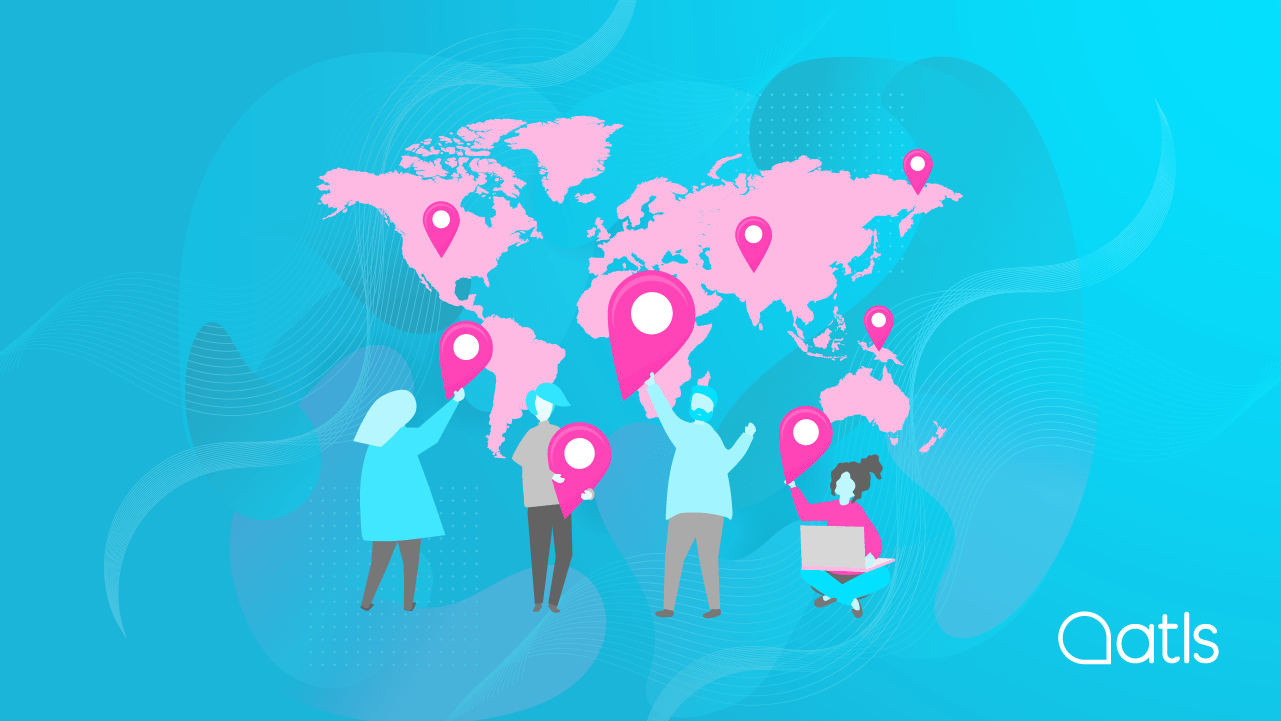What is localization and why is it important for your international expansion?

Keywords: Localization , localization strategies, content localization, game localization, website localization services, app localization
Localization here, localization there... It has reached a point where we keep hearing that word in different contexts, and rightly so. Oh, and then there is its alias, L10n. We're only mentioning it so you don't get left behind by all the terminology. 😉
What is required for a text to be easy to remember and appealing for a specific audience? That's where localization comes in. What's the best way to adapt a particular product to a particular market in order to increase your sales? This is what localization is all about. And if your company needed a boost to stand out from the crowd? This is yet another role played by a good localization strategy.
In one way or another, localization is present in many aspects of business expansion. It plays a big role in making a company more profitable and better known in its market, be it international or local. While there is no single strategy that can be applied in all situations, are you interested in finding out which type of localization in translation is best suited to you? Let's get to it!
All about localization: Let's go!
What is localisation?
First of all, a good description of localization to make things clear: when we talk about localizing a text, we refer to the process of adapting content of all kinds to a specific market.. On the one hand, we have to make sure that the message is understood in the target language in the same way as in the source language, i.e. that the reaction of both audiences is virtually the same. It's important to bear in mind that localization is not only about translating content into another language, but also about bringing one culture to another through localization strategies that are relevant to the message being conveyed. Localization is also useful for improving the user experience and in helping a brand reach potential customers who would never have known how to find a product without it.
Isn't translation the same as localization?
It's a debate which never ends: Is localizing a text equivalent to translating it? The short answer is no, even though there are similarities between both tasks.
Translation, while necessary to reach a wider audience, does not have the same sweeping effect as localization in reaching a more global or specific market. If we refer solely and exclusively to translation, there would not be much more to do beyond mastering the source and target languages and their conventions. Localization is also concerned with the more cultural aspects, and even some functional and technical ones (programming codes or server functions you use for your website, among others).
Once you have studied the target market in which you want your product to be placed (which could be a website, a video game, a TV series, or a mobile app), you must apply what you have learned so that your content reaches users in another language as if it had originally been conceived in that target language. That's the essence of it!
How can localization help your international expansion?
Localization is an essential tool for the international expansion of any company. According to a study carried out by the CNMC (the Spanish Markets and Competition Commission), in the first quarter of 2022, e-commerce rose by 25.3% compared to the previous year, representing 15.627 billion euros worth of activity. What do you think?
But wait for it: not content with that, more than 61% of digital companies in Spain sought to expand internationally within a year.
Without a minimal online presence, your company is not going to stand out as much as you might think. That's just the way it is. To achieve this, we guarantee, text localization is your best ally. How else would a person who lives halfway around the world and cannot speak your language find out about your services?
The importance of localization services (l10n) in internationalization (i18n)
The time has come to officially introduce the term "internationalisation", also known in business circles as i18n. This is the process by which a product is designed so that it can be purchased in different geographical areas smoothly and simply. For example, in a computer program, it means adapting it in such a way that it can be translated into several languages, changing currencies and using different date formats, without posing a problem in the long run.
It would be a real nuisance if all the amounts on your website were not adapted properly to the target market or if the delivery dates you provide were not clear. Doesn't bear thinking about! Thanks to the combined localization and internationalization process, you will avoid these mistakes.
Be aware that internationalising a product does not happen overnight. Think of it more as a long-distance race. However, hand-picking potential markets is not enough. You need a strategic localization and marketing plan to support you, knowing what the real demand for your products is.
Where are localization strategies applied?
While these can be applied to any product we want to become relevant in a specific market, what first comes to mind when thinking about localization is digital products, right?
It is common for localization strategies to be used for texts, but there is also website localization services, app localization, audiovisual localization, and game localization. Let's take a look at what all of these involve.
Text localization
The content localization strategy is the most common. This is because we find it everywhere. We are surrounded by texts. And, of course, the internet is awash with text. Translated into business language, this means that you will find examples of localization as far as the eye can see.
It is curious if you think that localizing a text does not always refer to two different languages, where the process of localizing texts separately is quite obvious, but to those that have such different variants as to require this process (as in the case of the Spanish and Latin American markets, which share a language, but of different variants). The basis of content localization is to tap into the culture of a potential customer, because even if you can understand a language, that does not mean you understand all the cultural components.
Website localisation
Another location strategy is applied to website localization. Internet-based businesses have long been with us, and are becoming increasingly so. Nowadays it is essential to localize websites in order to increase a business' audience, conversions and traffic.
What's the most important thing when it comes to localizing a website?
- Adapt, adapt and adapt. Whether it's embedded video, graphics, emoticons, images... everything can be adapted to the culture of the target market. Nor can we forget about sensitive issues that are seen differently in different cultures. Imagine having a funny pun as a slogan that in another area is considered offensive, even if you mean no harm. Textbook error!
- Conventions, your new friends Have you avoided the use of capital letters in the language of the market you want to conquer? Do you write out numbers or use numerals? The orientation of the website, forms of address in different countries and the order of names and surnames? Don't worry, website localization has already thought of all that for you.
- Legal details, so often forgotten Again, it's not all about translating a language. This aspect is actually essential to get your website up and running. Complying with regulations in your geographical area, but also with those of your other markets should be one of your top priorities.
Video game translation in localization
Here comes some data for you: in 2022, the video games sector had a total turnover of over two billion euros, i.e. a growth of 12.09 % compared to 2021, according to the Spanish Video Games Association (AEVI).
As a field that is growing exponentially over time, localization in video game translation has grown very important. The challenges of translating and localizing games have changed. Examples of this include a new need for functional diversity and inclusive language, which are here to stay and should therefore also be included in localization. There is also a tendency to continuously upgrade video games, where more technical elements (text strings, user interfaces and codes) have to be distinguished from the video game story itself. You need to know what is to be localized and what has to remain exactly the same.
Audiovisual translation in localization
Last but not least, localization in audiovisual translation also employs a number of localization strategies to adapt a product to a specific audience and market.
Audiovisual translation can be found in many sectors and is often overlooked as part of another process. An example of this is when we find a subtitled video on a website for which the localization process has been carried out, even though part of this involved subtitling the video correctly for the target market.
On the other hand, there are other types of audiovisual products such as TV series, films and corporate videos that require a lot of internal work to adapt them to a specific audience, or a process of cultural adaptation so that the message, even if it is not literal, reaches your potential clients in the same way.
Key factors in localization
So, we've looked at how localization can help us achieve business goals and we've also looked at the different types of localization. But are you sure about what the key factors for its success are? In reality, the answer is right in front of you, as these are the elements that form the basis of your internationalised e-commerce:
- Understanding the opportunities offered by these new markets.
- Study the competition beforehand to find out their weaknesses as well as your audience's pain points.
- Maintain the authenticity of your brand until the end of the localization process.
- Ensure that the localization of content follows high quality standards.
If you follow these localization strategies to the letter, the expansion of your business is virtually assured.
What does a localization strategy consist of?
Localization strategies are means by which a company has the opportunity to have its products reach other markets near and far in an exclusive and attractive way. They are part of a well thought-out marketing plan that aims to make the brand image and content known wherever it goes, adapted to a specific audience but without losing its original message.
Depending on the languages and the message concerned, adaptation vary in difficulty (though it will still require specific and technical knowledge to be carried out). In this sense, there is a propensity to localize towards the so-called FIGS languages (French, Italian, German and Spanish) if your business is located in Europe or Western countries, as well as being link languages in certain contexts. Gradually an Asian counterpart to FIGS is emerging known as CJK languages (Chinese, Japanese, Korean), emerging markets in certain fields that should not be overlooked at the level of macro- or micro-localization.
How to implement an effective localization strategy
What are the ingredients that cannot be missing in your favourite recipe because otherwise the dish would turn into something else?
Think about essential ingredients in relation to localization strategies: on the one hand, you have to spice up the dish with good research work, without which you would walking in the dark; on the other hand, local SEO targeting your new audience in that geographic region is the perfect accompaniment to round out your dish; and finally, the icing on the cake is nothing less than the creation of content that is specific to that market, not just tailored to it. Sound great, doesn't it?
Local audience research
Knock, knock. Is your company's buyer persona around? Ah, you don't know who that is precisely yet? Well, that's some homework for you!
When it comes to going beyond the basic information about a specific market, we are talking about a buyer persona, the ideal customer for your products through whom you will get to know your audience better and design localization strategies aimed at covering their needs as much as possible.
By outlining a buyer persona, you will understand the possible cultural differences in that market, what content is appropriate to it, and learn how to avoid offending them (not recommended if your goal is to get their attention).
Local SEO: optimising content by specific geographical area
Nor can you put SEO (search engine optimisation) on the back burner when localizing text, which is so essential in digital marketing.
Specifically, local SEO refers to the set of strategies to improve the positioning of a business in search results when potential users look for it, taking into account the consumer's location, since most consumers want a product or service to be located as close to them as possible. This is where it differs from conventional SEO.
If a customer searches via keywords, Google's algorithms are triggered to show results relevant to the search. In the end, Google's intention is to provide you with a satisfactory user experience, so it specialises in displaying relevant results in the shortest possible time. This is something that is easily seen on mobile phones with the help of location when you have it activated.
If you were to search for the name of a video game together with the name of a shop and its city, you would get results that would lead you to its physical shop or its website. What's more, you wouldn't even have to specify the city, as Google would assume your location and speed up the process for you. It should be noted that this would increase your local authority, because due to the increased traffic to your website, your business would be shown on many more occasions; on the first page of the browser results for a search and even on the map pack (list of top local businesses on Google maps) in the case of physical businesses.
Creation of content adapted to a culture and language
Once data is collected on a specific audience and market, localization is also about creating content, not just adapting it.
It's not the first time that companies that want to expand have sought to develop different design plans depending on the country where their products are targeted, or even to change fundamental parts of their products (have you ever wondered why Coca Cola does not sell soft drinks with unconventional flavours in Spain, but does so regularly in other countries?) Depending on the type of demand, the competition and the buying behaviour of your customers, your localization strategy for your content will pursue different goals. But in any case, they are all valid as long as the central focus is on cultural and linguistic knowledge of these markets. The consideration you show for others is the key to reaching out to them.
Examples and benefits of correct content localization
To leave with a good taste in your mouth, here are some examples of localizations that have been very well received. This will make it much easier for you to lead by example!
Who on the face of the earth is not familiar with the brand Adidas? A sports footwear brand with tremendous internationalisation and products all over the world. Well, depending on the geographical area from which you visit their website, in addition to seeing a more than adequate translation, you will find different results, because the behaviour of users changes depending on the region. Similarly, colours also vary according to their cultural significance: in China, Adidas has used bright, bold colours for some of its campaigns, while in the UK it has decided to stick to more neutral colours, conveying confidence in a variety of ways. Something similar happens with the localization of the ASOS website, an online clothing shop with an almost infinite catalogue for all sizes and tastes. The results vary according to geographical area, as does the style of clothing.
In both examples, the user feels at home because of the localization work behind it.
According to the 2023 Personalisation Report by Twilio Segment, customers are looking for a higher level of personalisation in the products they need and companies are keen to offer it, aware of the benefits, such as retaining more customers. Once you understand what your audience's pain points are and what to offer to remedy them, you can devise localization strategies that work.
ATLS has the training and experience to design the right localization strategies for you, as well as to carry out the different types of text localization you may need. Contact us with no obligation and we will advise you immediately. So, are you ready to give your business an international twist?
Interested in growing your business globally? Contact us to help expand your company!







